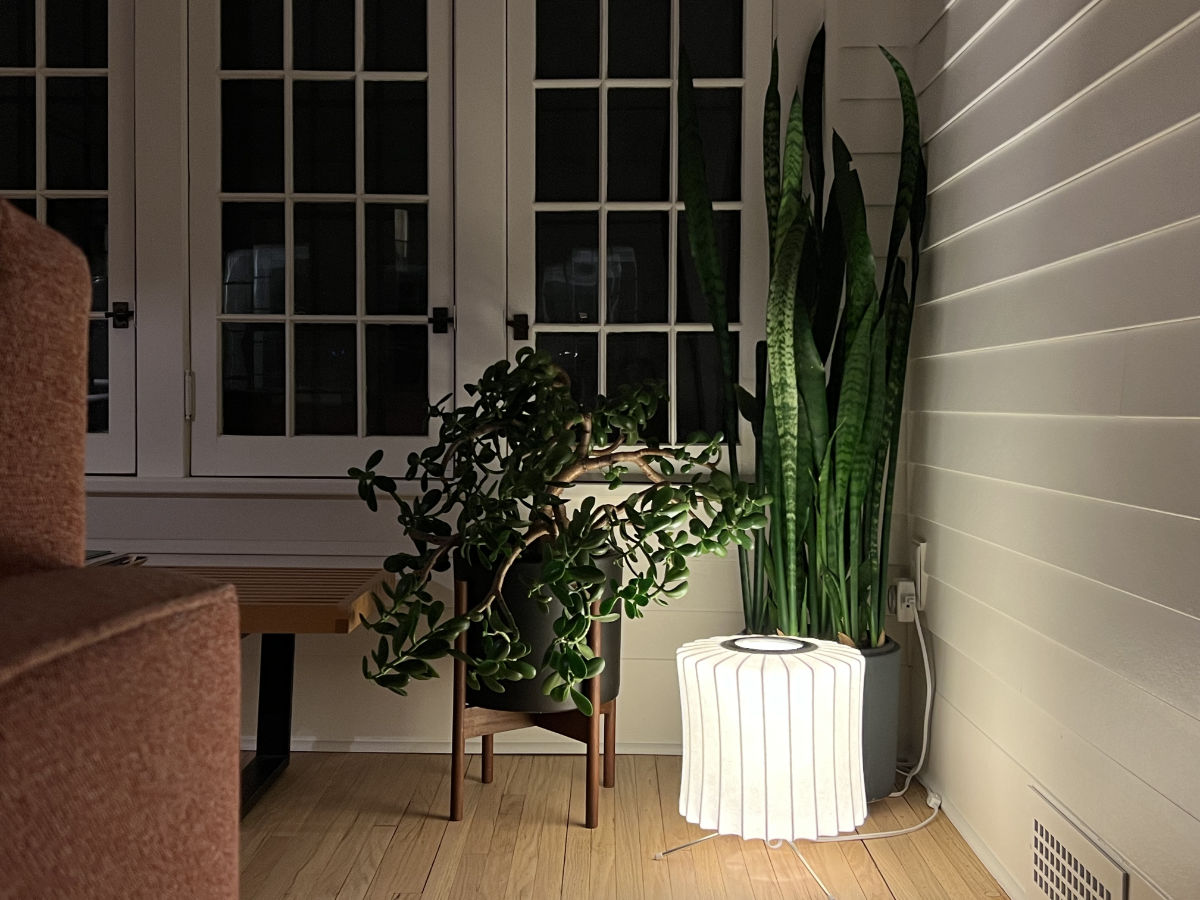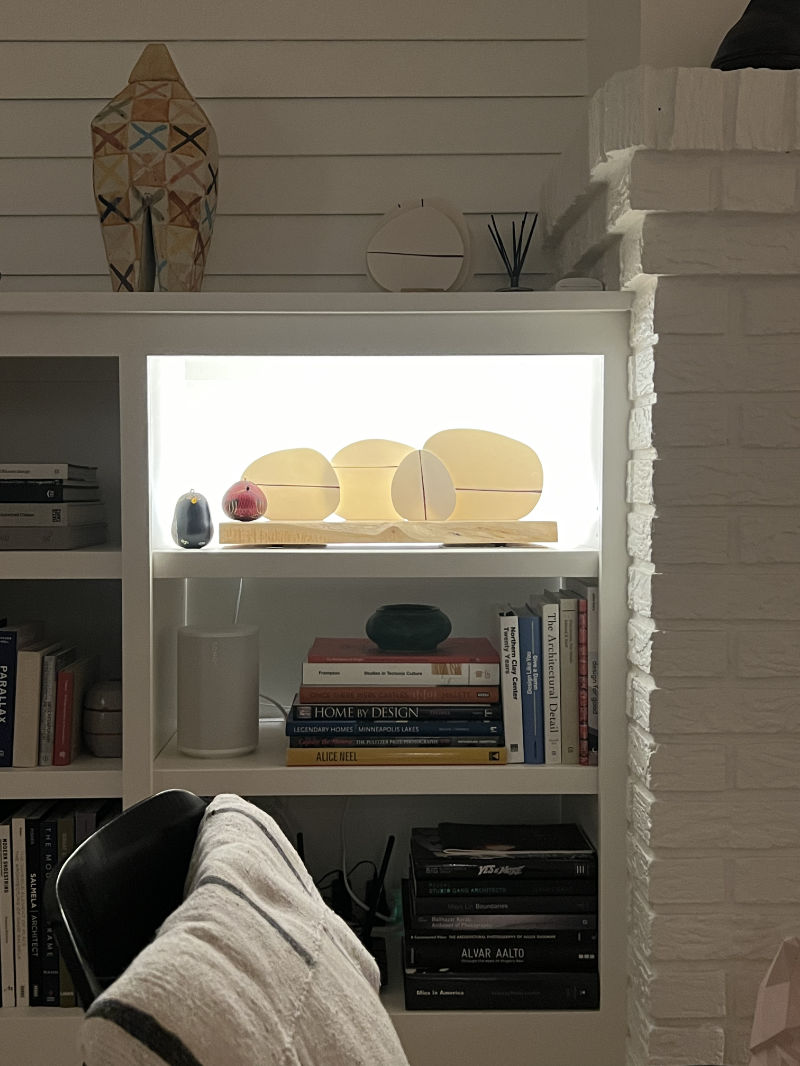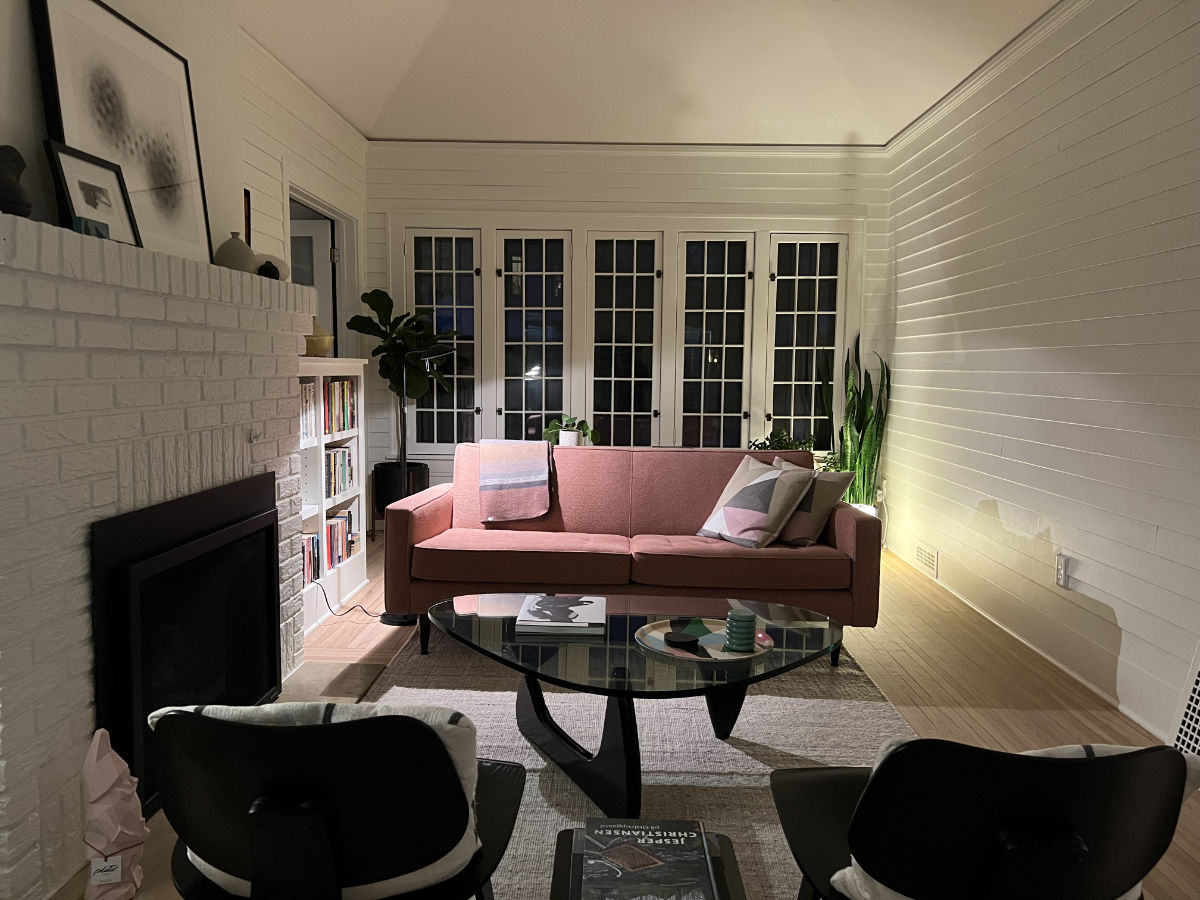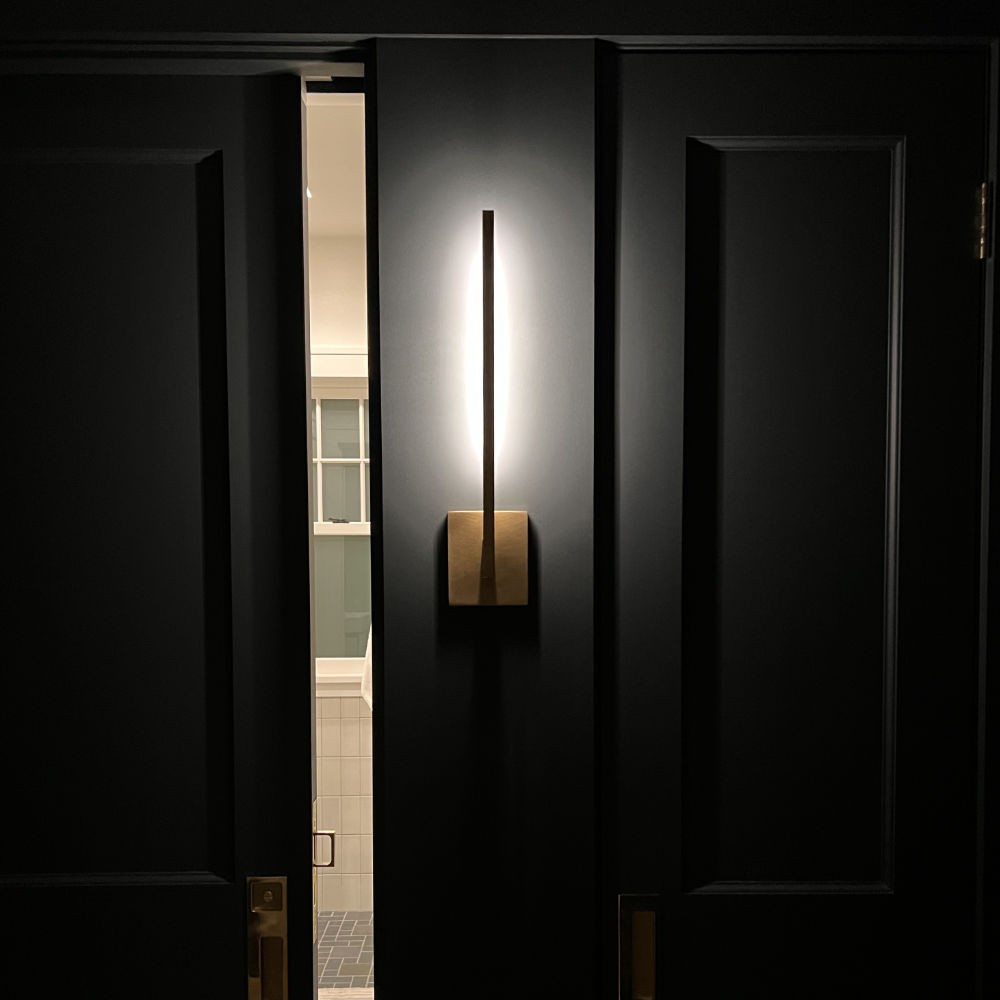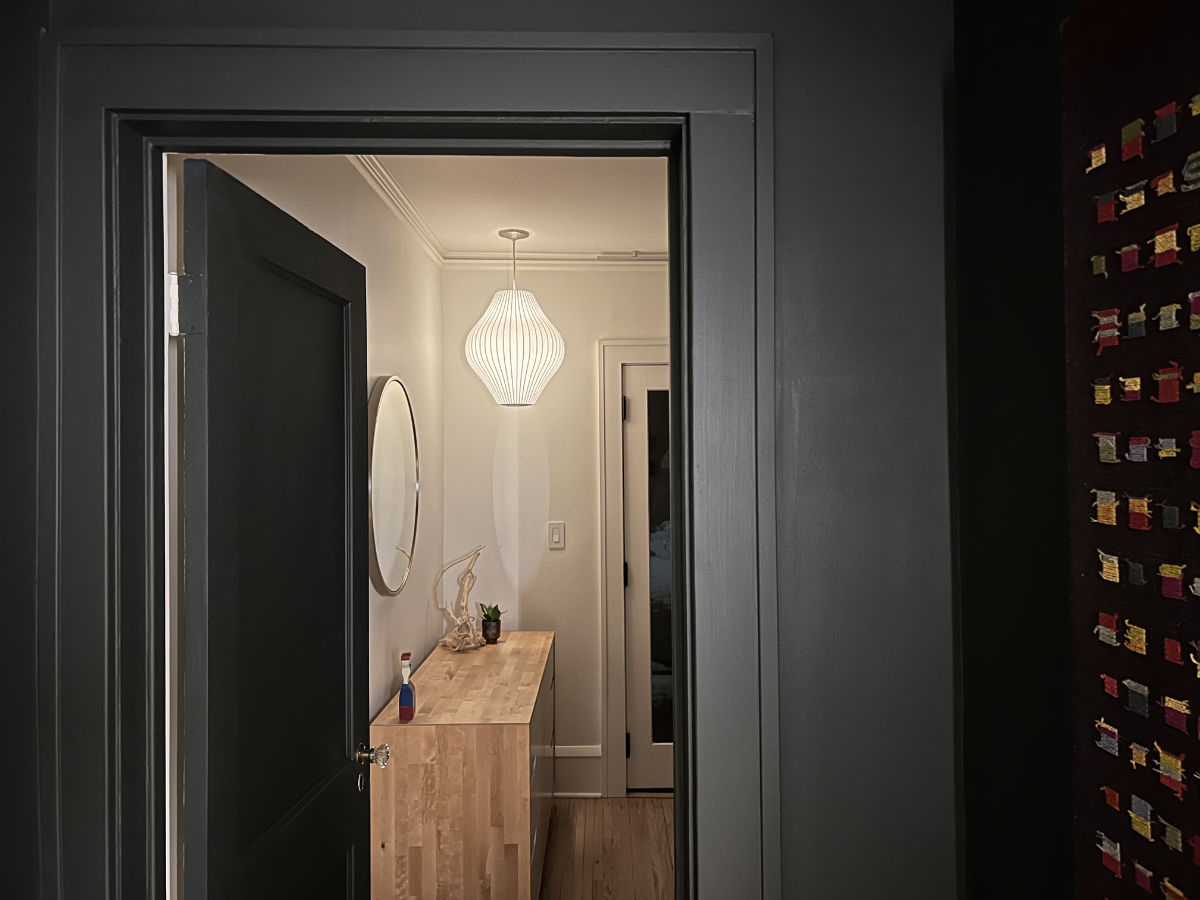The process of renovating my own home has cast new light on how I will consider future lighting plans. It’s all too easy to consider lighting from a floor plan view—arranging recessed lighting in a uniform grid, or along a wall to showcase art—but moving back into our house has me assessing my default solutions experientially. How much light is enough? Where is it most comfortable? My husband and I have been moving lamps around the house, and trading out bulbs, trying to optimize our luminary hygge.
Our living room—the literal center of our home—lacked any permanent lighting before our renovation, despite a mystery wall switch. The most dramatic feature of our renovation was reshaping the living room ceiling to increase height and add a skylight. We took this opportunity to add electric lighting, considering pendants and continuous LED up-lights, but settled on four ceiling mounted globes from Artemide in opposing corners. The globes mimic the bi-lateral symmetry of the room while creating a visual tension with gravity to hold mid-slope on the vault. I love the effect, but prefer the lights off. On, even dimmed, they create a uniformity reminiscent of a classroom. Great for a party or cleaning, but too overhead for a cozy conversation.
My takeaway has been, as with so many elements of design, less is more. Living rooms rarely require task lighting, with the exception of a reading light or two. The best result is soft and warm illumination of the social circle. In our careful editing, we ultimately moved a lamp to the floor because, in a seated gathering with friends, its previous position on a bench put the light source behind the head of our guest, giving eye contact the effect of looking into a familiar eclipse. Moving the lamp to the floor put the light source out of view while the same warm light is reflected off the walls and ceiling, creating a more uniform glow.
The other artificial light source in the room is a repurposed under-cabinet LED attached to the back of an interactive ceramic sculpture (by @juniperclay) set in a bookcase. The artist suggested backlighting the piece, but its utility as a lamp for the other end of the room was an unexpected delight.
Together, these low light sources perfectly balance the room for an intimate conversation. An additional reading light over the arm of the sofa adds task lighting for a book in front of the fireplace.
Beyond, but visible from the living room, is my favorite lighting effect. The hall connects both bedrooms and bath with the living room. It’s a perfectly scaled antechamber between living and sleeping, social and private. This hall had an existing recessed can that adequately illuminated the space, but it certainly didn’t celebrate it. The new sconce is centered on a wide trim board between new bathroom and linen doors. The fixture is a linear LED reminiscent of a candlestick from @visualcomfort that indirectly lights the hall and can dim to the level of a nightlight. It also happens to be centered on the door to the living room, from which it draws attention and contrast.
In the primary bedroom, located at the back of the house, with access to the landscaped yard, a previously installed George Nelson pendant hangs in a corner. It is ample for general lighting and accented by Tolomeo reading lights mounted to a new paneled headboard wall.
The power of lighting in our home first became apparent long before the renovation when we repainted our house. At the time, we developed a two-tone exterior color scheme of dark colors with a white accent at window mullions and in the recessed front porch. We switched out two porch sconces with new LED fixtures that emitted light sideways. The surprise result was a brilliantly illuminated porch surrounded by the symmetrical shadow of our house.
The success of lighting is best experienced, rather than photographed. (If you don’t believe me, just check the Instagram of your favorite lighting brands and see how many images feature lights actually on.) My photos fall short of capturing the warmth emitted from our selected fixtures and placement, and certainly the joy of the experience, but it is the experience that has changed my understanding of how to achieve warmth and intimacy through lighting.

